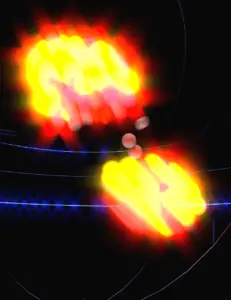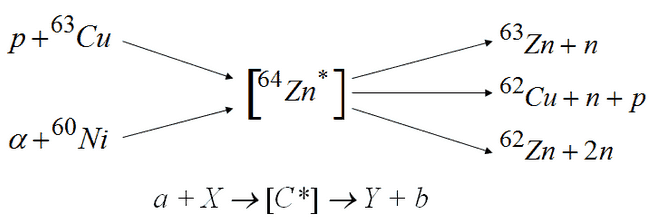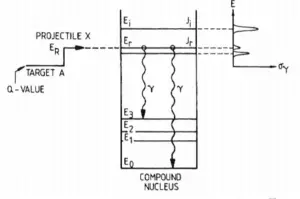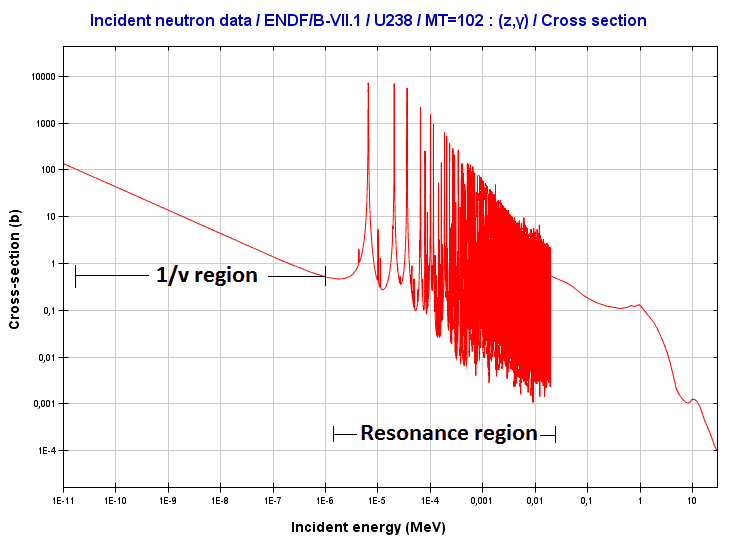Neutron Nuclear Reactions
The study of neutron nuclear reactions and nuclear reactions in general is of paramount importance in physics of nuclear reactors. Progress in the understanding of nuclear reactions generally has occurred at a faster pace compared to similar studies of chemical reactions and generally a higher level of sophistication has been achieved.
Shortly after the neutron was discovered in 1932, it was quickly realized that neutrons might act to form a nuclear chain reaction. When nuclear fission was discovered in 1938, it became clear that, if a neutron induced fission reaction produces new free neutrons, that each of these neutrons might cause further fission reaction in a cascade known as a chain reaction. Therefore the calculations of nuclear reactors are determined by the transport of neutrons, their interaction with matter and their multiplication within a nuclear reactor.
Definition
A neutron nuclear reaction is considered to be the process in which neutron interacts with a nuclear particle to produce two or more nuclear particles or ˠ-rays (gamma rays). Thus, a neutron nuclear reaction must cause a transformation of the target nuclide to another nuclide. Sometimes if a nucleus interacts with another nucleus or particle without changing the nature of the nuclide, the process is referred to a nuclear scattering, rather than a neutron nuclear reaction.
In order to understand the nature of neutron nuclear reactions, the classification according to the time scale of of these reactions has to be introduced. Interaction time is critical for defining the reaction mechanism.
There are two extreme scenarios for nuclear reactions (not only neutron reactions):
- A projectile and a target nucleus are within the range of nuclear forces for the very short time allowing for an interaction of a single nucleon only. These type of reactions are called the direct reactions.
- A projectile and a target nucleus are within the range of nuclear forces for the time allowing for a large number of interactions between nucleons. These type of reactions are called the compound nucleus reactions.
In fact, there is always some non-direct (multiple internuclear interaction) component in all reactions, but the direct reactions have this component limited.
Basic characteristics of direct reactions:
- The direct reactions are fast and involve a single-nucleon interaction.
- The interaction time must be very short (~10-22 s).
- The direct reactions require incident particle energy larger than ∼ 5 MeV/Ap. (Ap is the atomic mass number of a projectile)
- Incident particles interact on the surface of a target nucleus rather than in the volume of a target nucleus.
- Products of the direct reactions are not distributed isotropically in angle, but they are forward focused.
- Direct reactions are of importance in measurements of nuclear structure.
Basic characteristics of compound nucleus reactions:
- The compound nucleus is a relatively long-lived intermediate state of particle-target composite system.
- The compound nucleus reactions involve many nucleon-nucleon interactions.
- The large number of collisions between the nucleons leads to a thermal equilibrium inside the compound nucleus.
- The time scale of compound nucleus reactions is of the order of 10-18 s – 10-16 s.
- The compound nucleus reactions is usually created if the projectile has low energy.
- Incident particles interact in the volume of a target nucleus.
- Products of the compound nucleus reactions are distributed near isotropically in angle (the nucleus loses memory of how it was created – the Bohr’s hypothesis of independence).
- The mode of decay of compound nucleus do not depend on the way the compound nucleus is formed.
- Resonances in the cross-section are typical for the compound nucleus reaction.
Types of neutron-nuclear reactions
We hope, this article, Neutron Nuclear Reaction, helps you. If so, give us a like in the sidebar. Main purpose of this website is to help the public to learn some interesting and important information about radiation and dosimeters.





